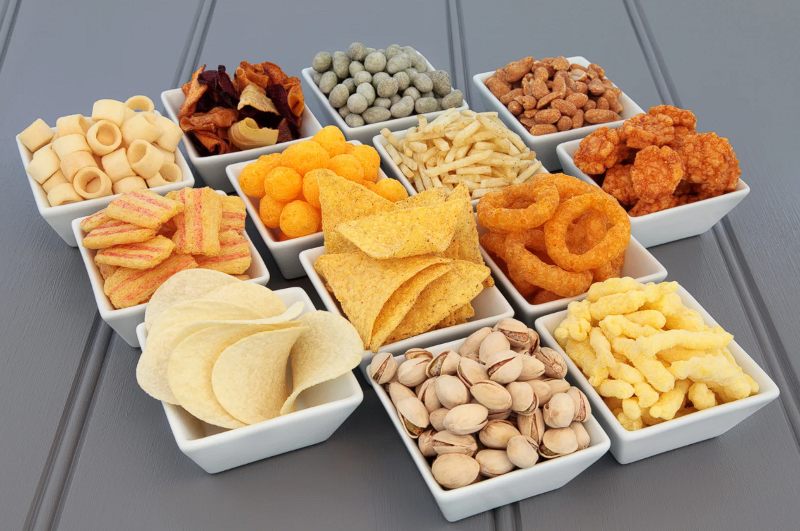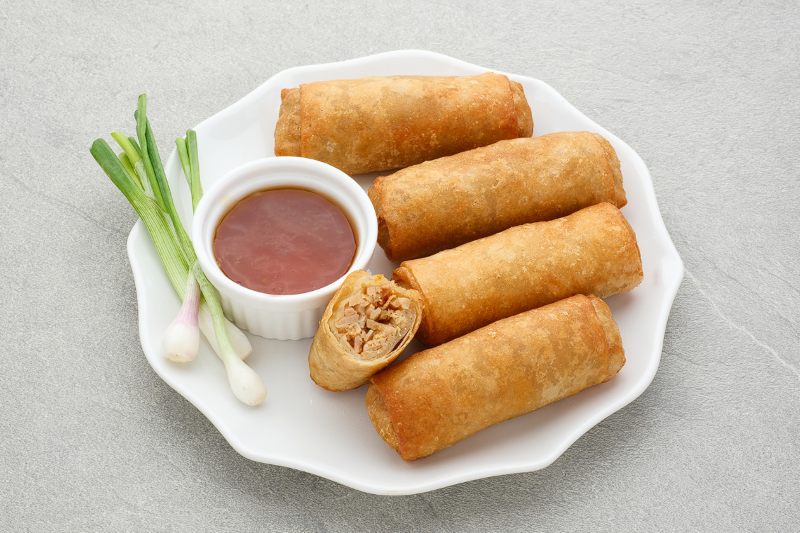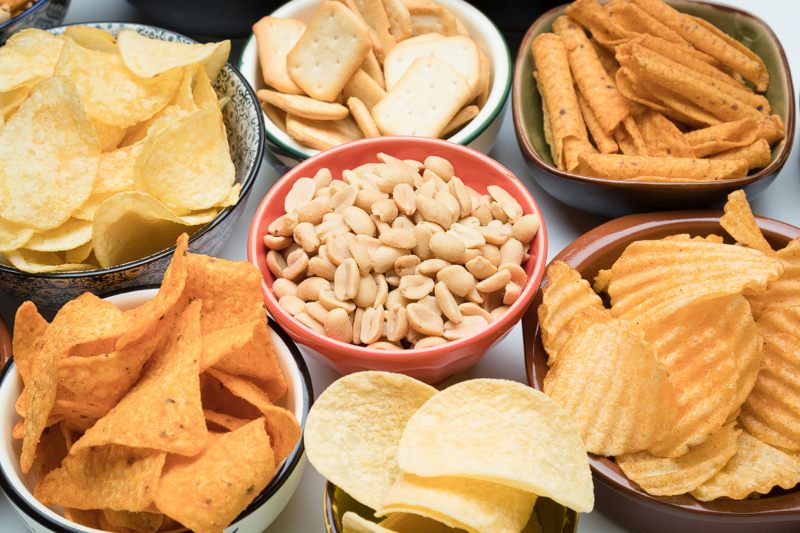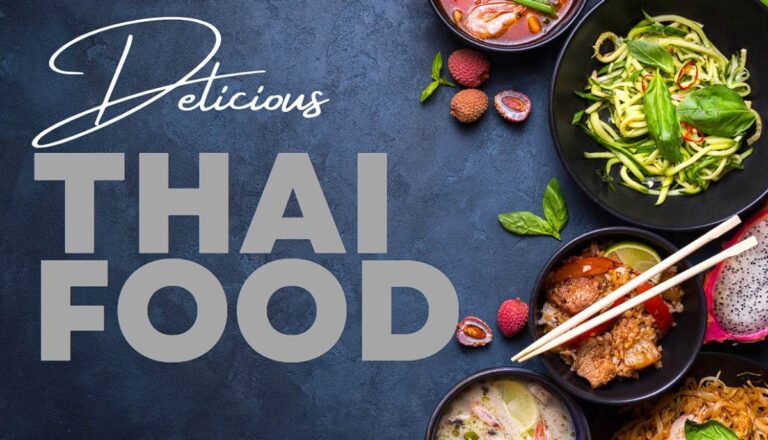Top 14 Best Low Calorie Asian Snacks

Introduction
Low Calorie Asian Snacks: Asian cuisine is celebrated worldwide for its rich flavors, diverse ingredients, and cultural heritage. Among its many delights, Asian snacks hold a special place for their ability to combine taste with health benefits. In an age where health-conscious eating is paramount, finding low-calorie snacks that don’t compromise on flavor can be a challenge. However, Asian cuisine offers a plethora of options that are both delicious and nutritious. In this article, we will explore the top 14 best low calorie Asian snacks that you can enjoy without guilt.
Table of Contents
Health Benefits of Low Calorie Asian Snacks
Choosing low calorie Asian snacks is not just a trend; it’s a smart approach to maintaining a healthy lifestyle. One of the primary benefits of low-calorie snacks is weight management. By consuming snacks that are lower in calories, you can control your calorie intake and avoid the common pitfalls of weight gain. This doesn’t mean you have to sacrifice taste or satisfaction; there are plenty of flavorful options that are also low in calories.
Another significant benefit is improved energy levels. Low-calorie snacks, especially those rich in protein and fiber, can provide a sustained energy boost without causing the dreaded sugar crash. This is particularly important for maintaining productivity and alertness throughout the day. Additionally, low-calorie snacks often contain fewer unhealthy fats and sugars, contributing to better overall health and well-being.
Better digestion is another advantage of opting for low-calorie snacks. Many of these snacks are high in fiber, which aids in digestion and promotes a healthy gut. A well-functioning digestive system can enhance nutrient absorption and prevent issues like bloating and constipation. Incorporating low-calorie snacks into your diet can thus play a crucial role in maintaining a balanced and healthy lifestyle. [Low Calorie Asian Snacks]
Criteria for Selecting Low Calorie Snacks
When selecting low-calorie snacks, it’s essential to consider several factors to ensure they align with your dietary goals. First and foremost, evaluate the nutritional content. Look for snacks that are high in essential nutrients like protein, fiber, vitamins, and minerals while being low in unhealthy fats and sugars. This balance ensures that you’re not just consuming empty calories but nourishing your body with the nutrients it needs.
Taste and satisfaction are equally important. A snack should be enjoyable and satisfying, providing a sense of indulgence without overindulgence. The best low-calorie snacks are those that are flavorful and filling, helping you curb hunger pangs and avoid overeating later. Consider snacks with a variety of textures and flavors to keep your palate excited and satisfied.
Accessibility and convenience are also key criteria. The ideal snack should be easy to find, prepare, and carry with you on the go. This ensures that you can maintain healthy eating habits even when you’re busy or traveling. Pre-packaged options or snacks that require minimal preparation are excellent choices for those with a hectic lifestyle. [Low Calorie Asian Snacks]
Top 14 Best Low Calorie Asian Snacks
1. Edamame
Nutritional Benefits: Edamame, or young soybeans, are a powerhouse of nutrition. They are an excellent source of plant-based protein, making them an ideal snack for vegetarians and vegans. In addition to protein, edamame is rich in fiber, which aids in digestion and keeps you feeling full longer. These green gems are also packed with essential vitamins and minerals such as folate, vitamin K, and magnesium, contributing to overall health and wellness.
How to Prepare and Enjoy: Preparing edamame is incredibly simple, making it a convenient snack option. You can buy them fresh or frozen, with frozen edamame being the more readily available option in many supermarkets. To prepare, simply boil or steam the edamame pods for about 5-7 minutes until they are tender. Add a pinch of sea salt to enhance their flavor. You can enjoy them warm or cold, making them a versatile snack that can be eaten at home or on the go. For an extra kick, try tossing them with a bit of chili powder or garlic salt. [Low Calorie Asian Snacks]

2. Seaweed Snacks
Nutritional Benefits: Seaweed snacks are a low-calorie option that packs a nutritional punch. Seaweed is incredibly low in calories but rich in essential vitamins and minerals, including vitamins A, C, E, and K, as well as iodine, which is crucial for thyroid function. Additionally, seaweed contains antioxidants that help protect your cells from damage and support overall health. The fiber content in seaweed also aids in digestion and helps keep you feeling satisfied between meals.
Popular Brands and Flavors: Seaweed snacks have gained popularity in recent years, and there are many brands and flavors to choose from. Brands like Annie Chun’s and SeaSnax offer a variety of options, including wasabi, sesame, and teriyaki-flavored seaweed snacks. These snacks are often lightly roasted and seasoned, providing a satisfying crunch and burst of flavor. They are also convenient and portable, making them an excellent option for a quick and healthy snack on the go. Whether you prefer a bit of spice or a savory sesame taste, there’s a seaweed snack to suit your palate. [Low Calorie Asian Snacks]
3. Rice Crackers
Nutritional Benefits: Rice crackers are a popular snack in many Asian countries, known for their light and crunchy texture. These crackers are typically low in calories and fat, making them a great choice for a guilt-free snack. They are gluten free which makes them suitable for individuals with gluten sensitivities. While they may not be as nutrient-dense as some other snacks, rice crackers often contain some essential vitamins and minerals, especially if they are made with whole grains.
Varieties and Serving Suggestions: There are many varieties of rice crackers available, ranging from plain to flavored options. Some popular flavors include soy sauce, seaweed, and sesame. You can enjoy rice crackers on their own or pair them with healthy toppings for added flavor and nutrition. For example, try spreading a bit of avocado or low-fat cheese on top, or enjoy them with a side of hummus or salsa. These additions can boost the nutritional value of your snack and make it more satisfying. [Low Calorie Asian Snacks]
4. Fresh Spring Rolls
Nutritional Benefits: Fresh spring rolls, also known as summer rolls, are a delightful and nutritious snack option. These rolls are typically made with rice paper and filled with a variety of fresh vegetables, herbs, and sometimes lean protein like shrimp or chicken. This combination makes them low in calories but high in vitamins, minerals, and fiber. The fresh ingredients provide a burst of flavor and crunch, while the rice paper wrapper keeps the rolls light and easy to eat.
Ingredients and Preparation: Making fresh spring rolls at home is relatively simple and allows you to customize the ingredients to your liking. Start with rice paper wrappers, which you can find in the international section of most grocery stores. Soak the wrappers in warm water until they are pliable, then fill them with a mix of fresh vegetables like lettuce, carrots, cucumbers, and bell peppers. Add some fresh herbs such as mint, basil, or cilantro for extra flavor. If you like, include a source of lean protein like shrimp, tofu, or grilled chicken. Roll them up tightly and serve with a low-calorie dipping sauce, such as a light soy or fish sauce. [Low Calorie Asian Snacks]
5. Miso Soup
Nutritional Benefits: Miso soup is a traditional Japanese dish that is both comforting and nutritious. It is made from miso paste, which is a fermented soybean product rich in protein, vitamins, and minerals. Miso is also a good source of probiotics, which are beneficial for gut health. The soup itself is low in calories but high in flavor, making it an excellent choice for a light and satisfying snack.
Easy Recipes for Home Preparation: Preparing miso soup at home is straightforward and requires only a few ingredients. Start by making a basic dashi broth, which is a type of Japanese stock made from kombu (dried kelp) and bonito flakes (dried fish flakes). Once you have the dashi, dissolve a spoonful of miso paste into the broth. You can then add other ingredients like tofu cubes, seaweed, and green onions to enhance the flavor and nutritional value of the soup. Serve the miso soup warm, and enjoy its soothing, savory taste. [Low Calorie Asian Snacks]
6. Kimchi
Nutritional Benefits: Kimchi is a traditional Korean dish made from fermented vegetables, typically cabbage and radishes. This spicy, tangy condiment is low in calories but packed with vitamins A, B, and C, as well as beneficial probiotics that support digestive health. The fermentation process enhances the nutritional profile of the vegetables, making kimchi a powerhouse of nutrients and beneficial bacteria.
Different Ways to Consume Kimchi: Kimchi is incredibly versatile and can be enjoyed in many different ways. You can eat it straight from the jar as a side dish, or add it to soups, stews, and stir-fries for an extra burst of flavor. Kimchi also makes a great topping for rice bowls, sandwiches, and tacos. Its bold taste and crunchy texture can transform a simple dish into something extraordinary. Additionally, kimchi is easy to make at home, allowing you to customize the level of spice and flavor to your preference. [Low Calorie Asian Snacks]
7. Mochi (Daifuku)
Nutritional Benefits: Mochi, or Daifuku, is a Japanese rice cake made from glutinous rice flour. While traditional mochi can be high in sugar, there are many healthier variations available. Mochi is low in fat and can be a good source of carbohydrates, providing a quick energy boost. When filled with nutritious ingredients like sweetened red bean paste or fresh fruit, mochi can be a satisfying and relatively low-calorie treat.
Healthy Variations: To enjoy mochi as a low-calorie snack, look for options with healthier fillings. For instance, mochi filled with sweetened red bean paste (anko) offers a good balance of protein and fiber. You can also find mochi filled with fresh fruit, like strawberries or mango, which adds natural sweetness without the extra calories. Another option is to make your own mochi at home using natural sweeteners like honey or agave instead of sugar. This way, you can control the ingredients and enjoy a delicious and nutritious treat. [Low Calorie Asian Snacks]

8. Soba Noodles
Nutritional Benefits: Soba noodles, made from buckwheat, are a nutritious and low-calorie snack option. Buckwheat is high in protein, fiber, and essential amino acids, making soba noodles a great source of energy and nutrients. Furthermore, soba noodles are free of gluten, making them a great option for individuals with gluten sensitivities or celiac disease. They are also rich in antioxidants, which can help protect your cells from damage and support overall health.
Light Recipes for Snacking: Soba noodles can be enjoyed in a variety of ways, making them a versatile snack option. One popular way to enjoy soba noodles is in a cold noodle salad. Prepare the noodles as directed on the package, then cool them by rinsing under cold water. Toss the noodles with a light dressing made from soy sauce, rice vinegar, and a touch of sesame oil. Add fresh vegetables like cucumbers, carrots, and bell peppers, along with some chopped green onions and sesame seeds for extra flavor and crunch. You can also enjoy soba noodles in a warm broth with vegetables and a bit of lean protein for a comforting and nutritious snack. [Low Calorie Asian Snacks]
9. Pickled Vegetables
Nutritional Benefits: Pickled vegetables are a staple in many Asian cuisines and offer a low-calorie, nutrient-rich snack option. The pickling process enhances the flavor of the vegetables while preserving their nutritional content. Pickled vegetables are high in vitamins and minerals, particularly vitamin C and potassium, and are also a good source of probiotics, which support digestive health. The fermentation process involved in pickling can also increase the bioavailability of certain nutrients, making them easier for your body to absorb.
Popular Types and How to Make Them: There are many types of pickled vegetables to choose from, each offering its own unique flavor and nutritional benefits. Some popular options include pickled cucumbers, carrots, radishes, and daikon. To make your own pickled vegetables at home, start by slicing your chosen vegetables into thin pieces. In a saucepan, combine equal parts water and vinegar with a bit of sugar and salt, and bring the mixture to a boil. Pour the hot pickling liquid over the vegetables and let them cool to room temperature. Store the pickled vegetables in the refrigerator for at least a few hours before enjoying them as a crunchy, tangy snack. [Low Calorie Asian Snacks]
10. Wasabi Peas
Nutritional Benefits: Wasabi peas are a popular snack that combines the heat of wasabi with the crunch of roasted peas. These spicy treats are low in calories and provide a good amount of protein and fiber. Wasabi peas are also rich in antioxidants, which can help reduce inflammation and protect against cellular damage. The wasabi adds a kick of flavor that can help satisfy your cravings for something spicy and crunchy without overindulging.
Serving Suggestions: Wasabi peas can be enjoyed on their own as a crunchy, spicy snack, or mixed with other nuts and seeds to create a flavorful trail mix. They make a great addition to salads, adding a bit of crunch and spice to your greens. You can also use them as a topping for rice bowls or stir-fries to add an extra layer of flavor and texture. For a unique and delicious snack, try coating wasabi peas in a light drizzle of dark chocolate for a sweet and spicy treat. [Low Calorie Asian Snacks]
11. Shrimp Chips
Nutritional Benefits: Shrimp chips, also known as prawn crackers, are a popular snack in many Asian countries. These light and crispy chips are made from a mixture of shrimp or prawn and tapioca flour, making them a low-calorie option. Shrimp chips provide a small amount of protein and are generally low in fat, making them a healthier alternative to traditional potato chips. Additionally, they are often baked or air-popped rather than fried, which reduces their overall calorie and fat content.
Healthier Brands and Homemade Options: When choosing shrimp chips, look for brands that use natural ingredients and minimal additives. Some healthier options include baked or air-popped varieties, which have fewer calories and less fat than traditional fried versions. If you’re feeling adventurous, you can also make your own shrimp chips at home. Blend shrimp or prawn meat with tapioca flour and a bit of water to form a dough, then roll it out thinly and cut into small pieces. Bake the chips in the oven until crispy and enjoy a homemade, low-calorie snack. [Low Calorie Asian Snacks]
12. Green Tea and Matcha Treats
Nutritional Benefits: Green tea and matcha are well-known for their numerous health benefits, including their high antioxidant content. These antioxidants help protect your cells from damage and reduce inflammation. Green tea and matcha also provide a gentle energy boost without the jitters associated with caffeine, making them an excellent choice for a mid-day pick-me-up. Additionally, both green tea and matcha have been shown to support weight loss by boosting metabolism and aiding in fat burning.
Popular Snacks and Recipes: There are many ways to enjoy the benefits of green tea and matcha in snack form. Matcha-flavored rice cakes and green tea yogurt are popular options that provide a satisfying and nutritious snack. You can also make your own matcha energy balls by blending nuts, seeds, and a bit of honey or agave with matcha powder. These energy balls are easy to make and provide a quick and nutritious snack that you can take with you on the go. Another option is to make a refreshing matcha smoothie by blending matcha powder with your favorite fruits and a bit of almond milk. [Low Calorie Asian Snacks]

13. Fruit and Nut Mixes
Nutritional Benefits: Combining dried fruits with nuts creates a balanced snack that is both nutritious and satisfying. Dried fruits are rich in vitamins, minerals, and antioxidants, while nuts provide healthy fats, protein, and fiber. This combination helps keep you full and energized, making fruit and nut mixes an excellent snack choice. Additionally, the natural sweetness of dried fruits can help satisfy your sweet tooth without the need for added sugars.
Asian-Inspired Combinations: There are many Asian-inspired fruit and nut mixes that offer unique and delicious flavor combinations. For example, try mixing dried goji berries with almonds and cashews for a nutrient-rich snack. You can also add some dried mango or pineapple for a tropical twist. Another option is to combine dried lychee with pistachios and sunflower seeds for a sweet and crunchy snack. These mixes are easy to prepare and can be stored in airtight containers for a convenient and healthy snack anytime. [Low Calorie Asian Snacks]
14. Grilled Skewers
Nutritional Benefits: Grilled skewers, also known as yakitori in Japan or satay in Southeast Asia, are a healthy and flavorful snack option. These skewers typically feature lean meats, tofu, or vegetables that are grilled to perfection. Grilling is a healthy cooking method that reduces the need for added fats, keeping the calorie count low. Lean meats like chicken or shrimp provide a good source of protein, while vegetables add vitamins, minerals, and fiber to your snack.
Popular Ingredients and Preparation Tips: Grilled skewers are incredibly versatile and can be made with a variety of ingredients. Popular choices include chicken, shrimp, tofu, and a mix of colorful vegetables like bell peppers, zucchini, and mushrooms. To prepare, simply marinate your chosen ingredients in a mixture of soy sauce, garlic, ginger, and a touch of honey for added flavor. Thread the ingredients onto skewers and grill until cooked through and slightly charred. Serve with a side of low-calorie dipping sauce, like a light soy or teriyaki sauce, for a delicious and nutritious snack. [Low Calorie Asian Snacks]
Conclusion
Choosing low-calorie snacks doesn’t mean you have to sacrifice flavor or satisfaction. Asian cuisine offers a variety of delicious and nutritious options that can help you stay on track with your health goals. Whether you’re looking for something crunchy, savory, or a bit sweet, these snacks are sure to satisfy your cravings without the extra calories. So why not give them a try? Both your taste buds and waistline will appreciate it! [Low Calorie Asian Snacks]
FAQs
Q1. What are the healthiest low-calorie Asian snacks?
Edamame, seaweed snacks, and fresh spring rolls are among the healthiest options due to their high nutritional content and low-calorie count.
Q2. Can I find these snacks in regular grocery stores?
Yes, many of these snacks can be found in the international aisle of regular grocery stores or in specialized Asian markets.
Q3. How can I make my own low-calorie Asian snacks?
Many of these snacks, like fresh spring rolls, miso soup, and pickled vegetables, can be easily made at home with simple ingredients and recipes.
Q4. Are these snacks suitable for kids?
Yes, most of these snacks are kid-friendly and can be a great way to introduce children to new flavors and healthy eating habits.
Q5. How frequently should I include these snacks in my diet?
You can enjoy these snacks as often as you like, but it’s always best to balance them with a variety of other nutritious foods for a well-rounded diet.






